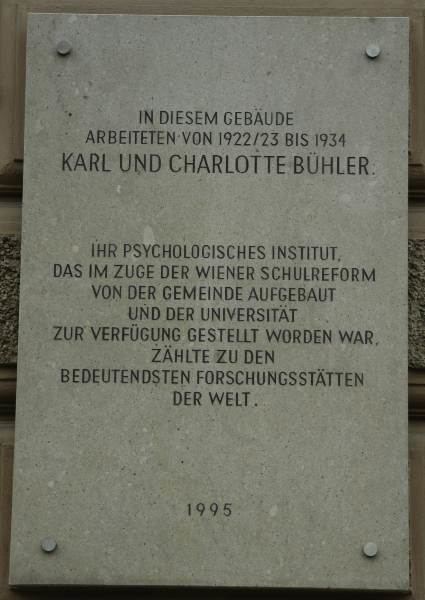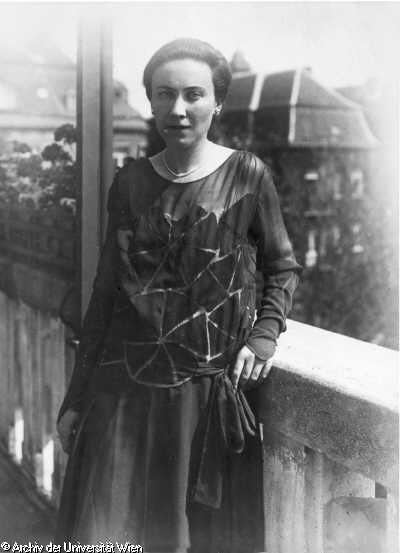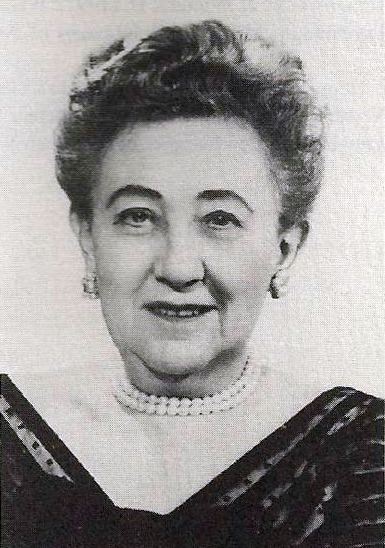Name Charlotte Buhler | ||
 | ||
Residence Germany, Austria, Norway, USA Fields Child psychologyDevelopmental psychology Institutions Technical University of DresdenUniversity of ViennaUniversity of OsloMinneapolis General HospitalLos Angeles County HospitalUniversity of Southern California Alma mater University of FreiburgUniversity of BerlinUniversity of Munich | ||
Retrospektive charlotte b hler und ihre zeit
Charlotte Bühler (née Malachowski, December 20, 1893 – February 3, 1974) was a German developmental psychologist.
Contents
las teor as humanistas de carl rogers abraham maslow y charlotte b hler
Life

Bühler was born Charlotte Berta Malachowski in Berlin, the elder of two children of Jewish government architect Hermann Malachowski, and his wife Rose (née Kristeller).

After graduating from high school in 1913, Charlotte Malachowski studied natural sciences and humanities at the University of Freiburg and the University of Berlin. In 1918, she received her doctorate from the University of Munich with a dissertation on the topic Über Gedankenentstehung: Experimentelle Untersuchungen zur Denkpsychologie ("On the origin of thought: Experimental studies on the psychology of thought"). That same year she went to Dresden to work with Karl Bühler, where she continued her research in the fields of child and youth psychology, as well as working on her habilitation. In 1920, she completed her habilitation at the Technical University of Dresden and became qualified to teach in Saxony.
She married Karl Bühler on April 4, 1916. Their daughter Ingeborg was born in 1917, and their son Rolf in 1919. Karl died in 1963 in Los Angeles, California. She herself fell ill in 1970 and returned in 1971 to live with her children in Stuttgart, where she died at the age of 80.
Academic appointments
In 1923, Charlotte Bühler went to teach at the University of Vienna, where in 1929 she was promoted to the position of associate professor. Both Bühlers worked closely together at this new institution, which provided them with a laboratory to conduct their research.
In the next few years at Vienna she gained international prestige through her research and publications which led to the development of the "Viennese child psychology school" of Charlotte Bühler - the spirit of which is still maintained today in the Charlotte Bühler Institute.
In March 1938, during a stay in London, she learned of the occupation of Austria by Nazi Germany. Karl Bühler was taken into "protective custody" on March 23, 1938 due to his vocal anti-Nazi sentiments. Via connections in Norway, Charlotte Bühler arranged the release of her husband after six and a half weeks, and in October 1938 the family was reunited in Oslo. Because Charlotte Bühler was of Jewish descent they emigrated to the United States.
Both Bühlers were offered professorships in 1938 by Fordham University in New York City, which, however, did not materialize. Karl Bühler then accepted a professorship in Saint Paul, Minnesota; however, Charlotte Bühler remained in Norway because she had already accepted a professorship at the University of Oslo and a position at the Teachers' Academy in Trondheim. Only after an urgent request by her husband did she emigrate in 1940 to Saint Paul in the United States, where she arrived shortly before the invasion of Norway.
In 1942 she accepted a position as senior psychologist at the Minneapolis General Hospital. In 1945 she became an American citizen and moved to Los Angeles, California, as chief psychologist at the Los Angeles County Hospital. She held this position until her retirement in 1958; during that time she also served as a professor of Psychiatry at the University of Southern California. After her retirement she went into private practice in Beverly Hills, California.
Work
Honors
Publications
Her list of publications includes 168 works, several of which have been translated into 21 languages.
